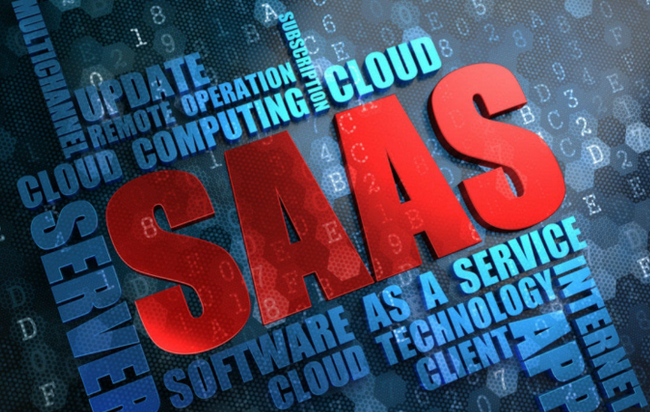众所周知,国际B2B业务的发展比中国早了约20年,与B2C的占比约为8:2,80%的美国上市公司都是B2B;而在国内,B2B的投资只占全部投资的5%,美国则达到40%。这表明国内B2B未来有着巨大的发展空间。
本文来自美国红点资本的投资人托马斯·通古斯的博客。文中的一个观点非常有趣,SaaS行业格局将进入整合的局面。考虑到中美企业服务上有近似度,我们将此篇文章翻译共享。

原文:Are We Seeing The Beginning Of SaaS Consolidation?
The number of vendors selling to sales and marketing has exploded from 500 to more than 3000 over the last three years. Are we reaching the end of an expansionary cycle? The software pendulum tends to swing between software suites, offering a collection of different tools, and best-of-breed point solutions.
But, have we reached the point where the best-of-breed, fragmented ecosystem is a permanent fixture? Okta’s Businesses at Work 2016 report calculates most enterprises pay for somewhere between 10-15 corporate applications. Those are the ones sanctioned by IT. How about the others?
Netskope’s Cloud Report calculates the average enterprise uses 613 cloud apps, a figure that doubled over the course of 2015. In addition, more than 20 percent of those surveyed use more than 1000. CEB found more than 30% of IT spend is bottoms up.
Can this continue? Consumerization of IT is a powerful secular trend that has shifted the purchasing decision from CIOs to line of business owners, because new solutions, these point solutions offer important differentiation to the line of business owners.
As long as this differentiation is substantial, we will continue to see fragmentation. A marketer who uses a best in class marketing automation solution to attain their lead and meeting numbers is not going to give up that piece of software without a fight.
But, this expanding constellation of point solutions does present some problems. First, billing. How does an organization understand exactly how much of the spending on software and so much of the purchasing decision is fragmented? Second, integrations across a thousand different pieces of software will be an enormous challenge. APIs certainly solve some of these data movement challenges, but they will not eliminate all friction. Third, how you train a team on so many different pieces of software? How do you ramp up new employees? Fourth, when something goes wrong who do you call? You have a thousand phone numbers to choose from.
The advantages of point solutions have to outweigh those costs. Over the last 10 years, the first decade of SaaS, startups have brought distribution, design, technology advantages and even have created new categories. Those startups who have sustainable competitive advantage will continue to thrive.
But, we are starting to see some categories with large numbers of entrant, where suddenly price is the diffentiator, because the category has been established and there very few barriers to entry. The recent boom in venture capital investment certainly intensifies competition with lots of new businesses chasing the same dollar.
These are the spaces where we will see suites develop, where commodification is inexorable. If you are competing on price, at some point you will bottom, the price you cannot undercut. At that point, the business will begin to compete on service rather than product, customer acquisition, technology, category creation etc. And whoever has the bigger balance sheet balance sheet will win.
Businesses can unlock a lot of value in bundling the collection of commodity products. They sell an integrated suite to a customer offering them a single purchasing process, a single customer support experience, and a “seamless” product. Without sufficient product differentiation in the market, this is a powerful way to change the buyer’s key purchasing criteria.
This year, we’ve seen more than 30 $1B software acquisitions. We will see more, and bigger companies will begin to bundle software into their offerings creating suites in SaaS. In categories with little technology or other differentiation, that may very well be the winning strategy. Meanwhile, successful startups will continue to do what they always have: develop sustainable competitive advantages through technology, speed of execution, and distribution innovations.
译文:
服务于销售和营销的软件厂商已经出现爆炸增长,3年时间从500家到超过3000家。快速扩张的周期是不是结束了?软件厂商们一直在摇摆,究竟是提供套装产品,工具合集还是最佳单点解决方案哪个才是出路?
这样破碎的生态会是常态么?Okta公司的企业商业报告指出,多数企业为10-15个企业级应用付费。这些应用是与公司的IT部门提出采购的。
Netskope的云计算报告得出企业平均使用613个云应用程序,这数字是2015年的两倍。此外,超过20%的受访企业使用的Saas的数量为1000多个。CEB发现企业超过30%的IT支出实际上是由业务人员提出并实施的。
这种情况会继续下去吗? 目前IT采购的一个长期趋势是,采购决策从首席信息官转移到企业主手中,这是因为这些新方案、单点方案往往围绕企业主的需求提供差异化。差异化必然带来碎片化。使用顶级营销自动化解决方案实现获客的营销人员并不会轻易放弃自己正在使用的软件。但是,这种正在扩张的单点解决方案的确存在一些问题。
首先,账单问题。 企业难以精准了解在软件上要花费多少,这种碎片化的问题有多严重。
第二,大量软件的整合无疑是一个巨大的挑战。 API会起到一些作用,却无法解决所有问题。
第三,你如何训团队熟练掌握如此多的软件?如何让新员工迅速上手?
第四,当产品出现问题需要支持的时候,究竟哪个电话能找到正确的联系人?
单点解决方案的优点只有超过这些成本才有前途。最近10年是SaaS的第一个十年,软件领域创业将分销、设计、技术等等优势带了进来,甚至创造了新的功能场景。可以预见,那些具有可持续竞争优势的创业公司将继续兴旺。
但是,我们开始看到一些细分领域出现大量的新玩家,仅在价格上有差异。这些细分领域已经确立但却没有足够的护城河挡住其他进入者。最近风险投资的火爆势必加剧了相同领域竞技企业的竞争。
在这样的领域套装产品、综合产品会继续发展,商品化是必然趋势。
如果你主打价格战,在某些程度上,你将会垫底,因为你总有一个成本无法消除。这时竞争将体现在服务上而远非产品,客户获取,技术优势、场景的建立能力等等将起到重大作用。盈利能力更佳的企业将最终获胜。
上述的套装产品有望给企业提供更多价值,保证单一流程、单一客户体验并实现无缝产品衔接。如果没有足够的差异化,这将成为影响买方决策的重要手段。
今年,我们已经看到超过30起10亿美金规模的软件并购案例。我们将看到更多、更大的公司开始将软件捆绑到他们的产品中创建成SaaS组合。 如果没有差异化或技术门槛,这可能是很好的获胜策略。 同时,成功的创业公司将继续保持他们已有的竞争优势:技术,执行速度和分销能力。
作者简介:托马斯·通古斯Tomasz Tunguz,红点风险投资风险投资人,畅销书《用数据获胜》联合作者。他投资了一系列SaaS公司,如Axial(一款适用于企业管理的“相亲”应用,帮助银行人员和私有企业收购或出售公司,2015年完成并购交易有500多笔,多在500万到1亿美元之间),数据分析公司Dremio,中型企业管理开支的智能应用Expensify等等,对SaaS公司颇有研究。
未经允许不得转载:化工,化塑B2B,产业互联网资讯 » 【百家】SaaS整合时代开始了吗?

